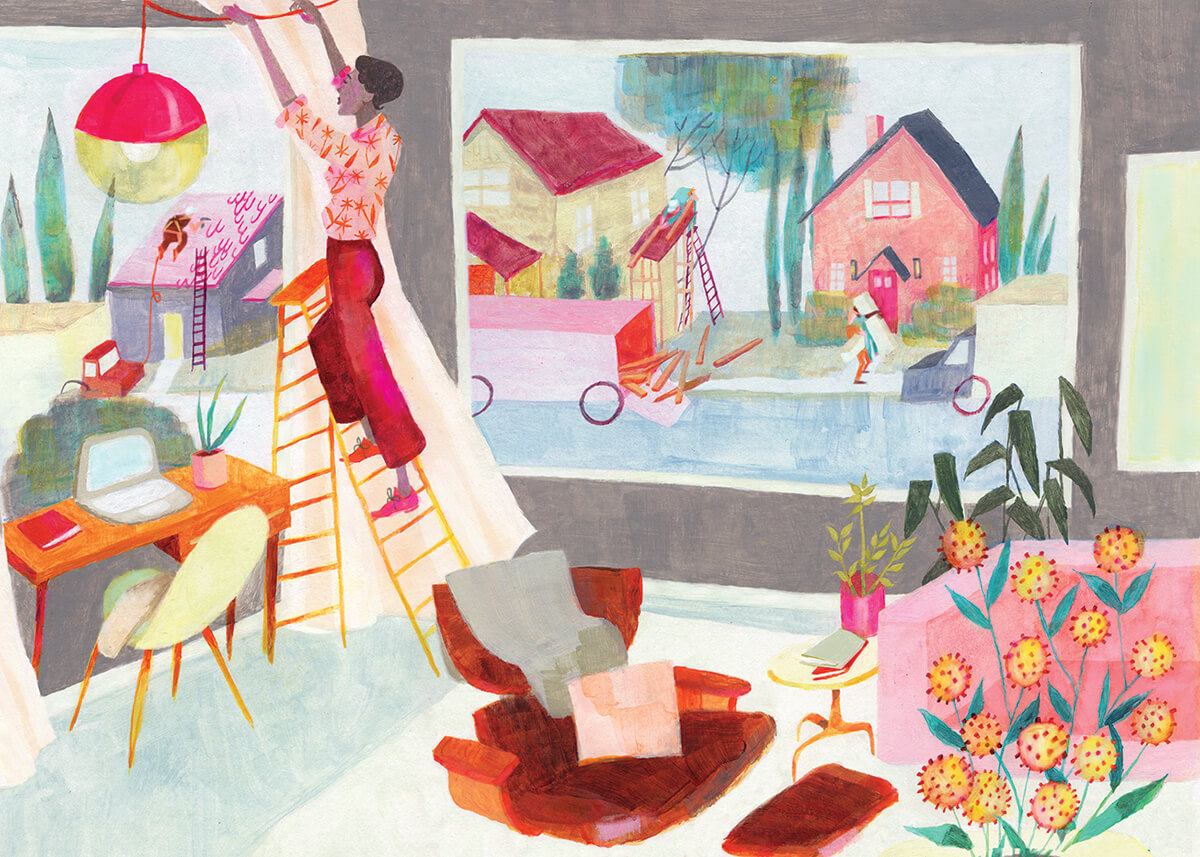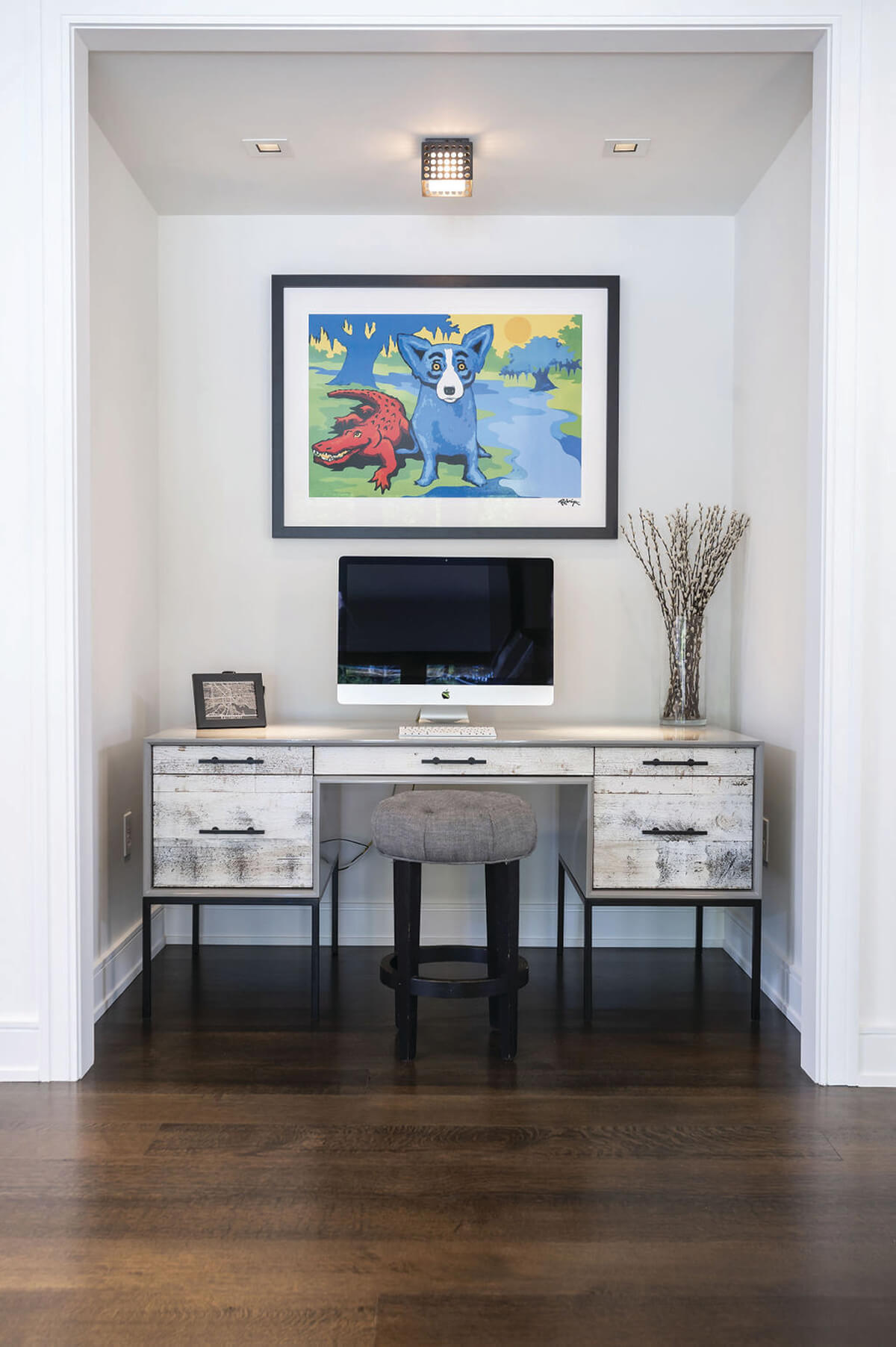Home & Living
How Months Stuck at Home Changed Our Design Needs—Maybe Forever
Local designers weigh in on trends inspired by lockdown.

When the coronavirus pandemic lockdown started in spring of last year, professionals in the architecture, interior design, and construction world braced for a major drop in business. But after an initial slowdown, most report not just being busy, but overwhelmed.
That’s because, for those people with the wherewithal, it was time for the big home renovation.
“It went crazy,” says Gavin Scherr, president of Scherr Contracting. “Most people have never spent that much time in their home before. For the first time, people weren’t just thinking about their house aesthetically, but asking, ‘How do we all function in this house together on a permanent basis?’”
In the warm summer months, spending on exterior projects soared as homeowners heeded advice to limit entertaining to small groups outside, escalating demand for decks, patios, fences, and even pool houses. Plenty of people also caught up on deferred maintenance—the broken door or crooked gutter that had been a mere nuisance pre-pandemic became an intolerable eyesore. The demand, combined with COVID-related supply-chain challenges, was so intense that it created a lumber shortage, raising prices 170 percent, according to the National Association of Homebuilders.
And once some schools announced they would not return in-person, the home-improvement people got even more emails and calls.
“There was a huge increase in basement, kitchen, and even bathroom jobs,” says Scherr. “People were looking at any space that wasn’t being used muched, even a screened porch that could be enclosed into an office or a recreational space, as everyone was trying to find more room.”
And with the movement toward work-from-home, as well as school-from-home, the importance of a home-based office space took on new meaning. With families suddenly flung together, it wasn’t uncommon to have two parents working from the dining-room table, older children doing Zoom school at a kitchen counter, and younger children suddenly in need of a school space that could be overseen by an adult. Home became loud and crowded.
“People would tell us their dining room table was filled with their third grader’s schoolwork when they were trying to work,” says Gina Adams, of Delbert Adams Construction. “So we found ways to make life easier for them within their home. Office nooks were a solution—a desk in an area that may not have had one before was an option.”
Adams says they tucked workspaces into architectural niches, landings, and unused bedrooms. One of the cleverest solutions they created was a “Murphy bed”-style desk that could be pulled out when needed and stored behind a wall after office hours.
“Everything was being used by more people, so there was a lot more wear and tear, particularly in the kitchen,” she adds. “We made changes to accommodate more users.”
Not every change was driven by practicality, Adams says. Some people simply wanted to make cosmetic changes, including things like soaking tubs, a touch of luxury that’s private at a time when privacy is in short supply.
Indeed, with multiple family members on Zoom, bickering kids, and dishes from three meals a day piling up, lockdown life can become unbearable. So perhaps that open floor-plan that was so fabulous when you bought the house becomes a lot less appealing.
This, says Sheryl T. McLean, principal of McLean & Tircuit Design, has compelled some clients to take a hard look at the rooms they rarely use, especially the dining room.
“Suddenly they needed that space that they only use at Christmas and Thanksgiving,” she says. “Many clients put up doors and added built-ins to their dining rooms and sunrooms—and those changes are permanent.”

Another design change she believes has staying power is the shift from the mudroom being a dumping ground to an official “receiving station.”
“In the past, the mudroom is where you took off your shoes and left the backpacks,” she says. “During the pandemic, it became a staging area for receiving groceries and deliveries to be wiped down, a room that could be disinfected…I think sanitation is burned into our brains now, and the expansion of the mudroom works well, is a good idea, and is a way to further protect your home.”
Those lucky enough to have outdoor space expanded into their yards, not just with patios and decks, but also with actual structures such as accessible dwelling units, “She Sheds,” and tiny houses. These flex spaces could be used as an office, quarantine quarters, a homeschool meeting spot, or another place for some sanity-saving privacy.
“Little personalized nooks have become so important, and I think that’s a trend that will stay,” says McLean. “Clients are looking for a space away.”
If there’s one lasting impact that Ashley Ingraham hopes to see from the pandemic, it’s that people will think before they acquire more belongings. As owner of Home Perspective, which does home organization, estate cleaning, and moving assistance, she’s been booked solid since June as homeowners came to terms with all their stuff.
“I got so many calls from people saying, ‘I’m so overwhelmed, I need to get organized,’” she says. “After two or more months of quarantine, everyone is looking at their space differently and re-evaluating it. There’s a calmness that comes from organization and people are looking to create home spaces that are stress-free.”
“People realized they had too much stuff they aren’t using and not enough of the things they did need,” she says. “If you made it through three months of quarantine and never baked bread, I think it’s safe to say you don’t need the bread maker.”
And then there’s the whole remote job thing: Ingraham says that having a long-term solution for working from home is very different than having a desk at home where you maybe sat occasionally to pay some bills or do the taxes. Certainly no one was set up for months of home school, either. Efficiency, storage, clarity—these needs became top of mind.
Her clients now also want organized pantries and storage areas so they can see exactly what they have and what they need to put in their Instacart—or to make that trip to the store as quick as possible. Clients are willing to jettison the things they aren’t using to find room for the extra toilet paper or the craft supplies. They’ve faced the areas of the home they could once avoid and reclaimed them for schoolrooms or for privacy.
Ingraham, too, has seen the impacts of social-media scrolling.
“I have so many clients that are younger than what I normally have who have spent six months binge-watching The Home Edit on Netflix and scrolling though Instagram and now want aspirational closets,” she says.
At some point, about 660 million vaccine doses from now, some parts of life will return to normal. Still, professionals believe many of the impacts COVID made on home design will last.
“I think everything is going to be different,” says Ingraham. “People see that working from home is a viable option and people have re-evaluated the way they live.”
Scherr says that after months of isolation, people want to gather again at home.
“We’re seeing growth in additions because people want a home that’s more versatile, that has places for family to stay and spend time together,” he says.
Hopefully, the coronavirus pandemic is a once-in-a-lifetime event, all our designers agree, but it will be a while before we shake off the concern that something else could be just around the corner. Regardless of what the “new normal” is, we’ve forever deepened our relationship with our homes.
“People have been walking around asleep in their own homes,” says Sheryl McLean. “Now they’re aware of what they have.”